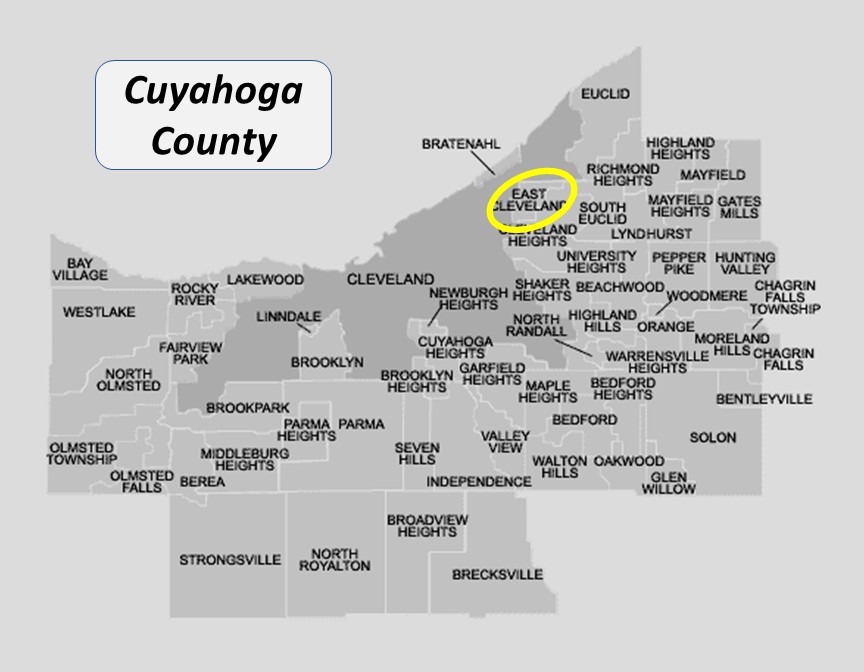East Cleveland
Suburb Dashboard: East Cleveland
Suburb of Cleveland (East Side)
Zip Codes: 44112
Census Tracts: 1501.00, 1503.00, 1504.00, 1511.00, 1512.00, 1513.00, 1514.00, 1515.00, 1516.00, 1517.00, 1518.00
Area Rating Grade/Range

School District
East Cleveland CSD
Rental Registration
Annual occupancy fees currently suspended per court order
Typical Rent Ranges
Single Family Houses:
- 2Bed. – $600-$750
- 3Bed. – $650-$1000
- 4Bed. – $750-$1200
Apartments/Multi-Family:
- 1Bed. – $400-$600
- 2Bed. – $500-$800
- 3Bed. – $600-$900
Property Tax Rate
Point of Sale Requirements
Point of Sale (POS) inspection required. Interior and exterior inspection required; any violations must be corrected by seller or assumed by buyer. If violations are assumed by buyer, buyer will need to correct violations within 180 days. No escrow hold required.
Population Estimate
About East Cleveland…
East Cleveland is directly adjacent to the University Circle area of Cleveland and has a very rich history dating back to the 19th century. It was once the country home of John D. Rockefeller, and a portion of his former estate (the Forest Hills area) is now a large public park, while the rest of it was subdivided and developed into upscale housing by his son around the time of the Great Depression.
East Cleveland lacks direct freeway access, but does have direct access to light rail, via two red line stations within East Cleveland city limits, providing very fast and easy access to downtown Cleveland. There is a strong sense of community pride amongst some of the long-time residents of this city. Unfortunately, despite these facts, on the whole East Cleveland is severely blighted and lacks the resources and funding to materially shift its situation.
The majority of the housing is from the first 3 decades of the 20th century, and consists of a mix of single family houses, multi-family houses, and apartment buildings. With the exception of a handful of well-maintained and stable streets, mostly adjacent to the Cleveland Heights border (e.g. the Forest Hills area, on the streets directly off of Lee), the housing stock of East Cleveland is in fair to poor condition, with abandoned buildings and vacant lots shockingly common.
Unless an investor is extremely established, with a track record of successfully handling properties in blighted or high-crime areas, East Cleveland can be a difficult place to invest. Investors are often lured by the low prices, but should be warned of the difficulties of owning property in this city.

